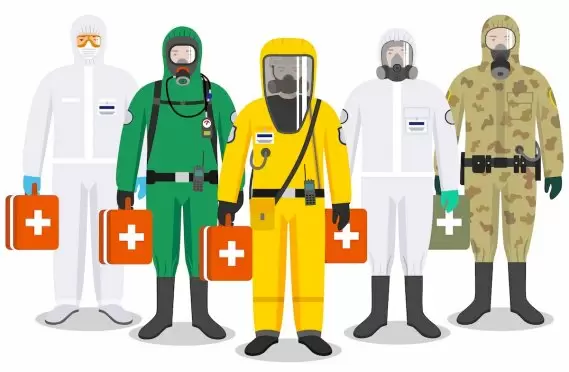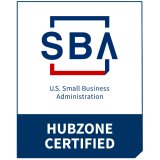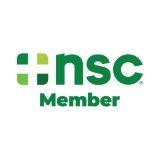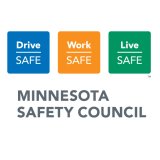On the Frontlines: Communication in Crisis
How a Shortage of PPE Impacts More than Health
In times of unbelievable scenarios and adversity driven by a global pandemic, the medical industry continues to innovate and respond to one crisis after another. Shortages of PPE (personal protective equipment), overflowing facilities, limited respirators, ICU capacity, and even staffing shortages are just some of the situations that are wreaking havoc across the nation. Amidst all that, the way thousands of medical professionals are adjusting to communicating is something that could drive change permanently.
No Shortage of PPE Problems in Healthcare
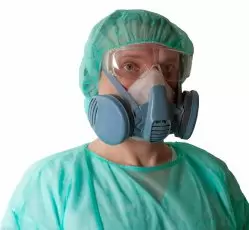 Within hospitals, physicians and nurses are facing shortages in PPE, driving organizations to alter protocol and adapt to what’s available in terms of safety. The N95 respirator shortage continues. In response, and under certain FDA guidance, for less critical situations, half mask ventilation is being used, a common style is called P100. This design, while designed to purify the air and protect against infectious, airborne materials, also constricts the mouth and the ability to hear the voice out of those respirators. This particular type of filtered mask respirator is likely the style that’s going to be used more for the day to day work of nurses and medical support staff. Communication is hampered when people wear half mask ventilation.
Within hospitals, physicians and nurses are facing shortages in PPE, driving organizations to alter protocol and adapt to what’s available in terms of safety. The N95 respirator shortage continues. In response, and under certain FDA guidance, for less critical situations, half mask ventilation is being used, a common style is called P100. This design, while designed to purify the air and protect against infectious, airborne materials, also constricts the mouth and the ability to hear the voice out of those respirators. This particular type of filtered mask respirator is likely the style that’s going to be used more for the day to day work of nurses and medical support staff. Communication is hampered when people wear half mask ventilation.
In more serious cases, PAPR (powered air-purifying respirators) respirators are being worn by critical care teams in healthcare settings. These respiratory protective devices are intensive by design, engineered to protect industrial and medical professionals from the most detrimental fumes and hazards. When you imagine a setting where the absolute most comprehensive protective device is necessary, this is the go-to style.
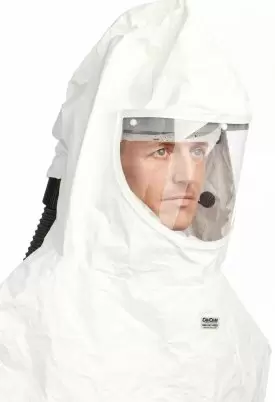
The product includes a helmet or hood with a motorized fan that blows air over the head and produces some noise inside the hood. That design minimizes difficulties caused by constricting the mouth or the voice, but because of the noise from the fan and because they have a hood over their face, it makes it difficult to hear and understand each other. These respirators are typically going to be used in regard to the higher-level cases of COVID-19 patient care. So when they have a patient who is coding and requires an intubation team, those medical professionals will be wearing PAPR respirators.
In more serious cases, PAPR (powered air-purifying respirators) respirators are being worn by critical care teams in healthcare settings. These respiratory protective devices are intensive by design, engineered to protect industrial and medical professionals from the most detrimental fumes and hazards. When you imagine a setting where the absolute most comprehensive protective device is necessary, this is the go-to style.
The product includes a helmet or hood with a motorized fan that blows air over the head and produces some noise inside the hood. That design minimizes difficulties caused by constricting the mouth or the voice, but because of the noise from the fan and because they have a hood over their face, it makes it difficult to hear and understand each other. These respirators are typically going to be used in regard to the higher-level cases of COVID-19 patient care. So when they have a patient who is coding and requires an intubation team, those medical professionals will be wearing PAPR respirators.
The Dangers of Miscommunication Between a Care Team
Communication in a hospital can literally translate to the difference between life and death. Clarity and continuity between medical professionals as they navigate new safety standards and adapt to different equipment are compromised each and every day.
For example, for a confirmed COVID-19 patient, the care team offers supportive care including supplemental oxygen, medication, and fluids akin to treating pneumonia or other severe lung conditions. The WHO tracking data show that one in six COVID-19 patients become seriously ill, requiring intensive treatment. The team might be comprised of roles including:
- Respiratory therapist
- Trauma specialist
- Circulating nurse
- Intubation specialist
- Anesthesiologist
- Laboratory personnel
Those who are bedside administering care are likely wearing PAPR respirators. Those who aren’t in direct contact with the patient might be wearing a P100 mask, perhaps it’s a documenting nurse, who's going to be outside of the room and that individual essentially needs to communicate with the nurses inside the room. In this critical scenario, one set of PPE is hindering hearing while the other is limiting speech and the entire team needs to communicate together with 100 percent certainty. You can imagine the outcome if communication is rendered ineffective or even impossible.
What's Working Right Now?
We know the world will never be the same after this pandemic subsides. Every industry has now realized, in real-time, the gaps that exist between proper communication and required equipment. How to be innovative in the face of shortages and crises. How to simply maintain as the world shifts on its axis. Knowing how medical teams are adjusting to self-protection while facing equipment shortages means those same teams are altering communication practices for both hearing and speaking alike. CavCom product technology is helping bridge the gap in instances where communication is more crucial than ever — like hospitals.
And in these instances in healthcare settings, communication may be conducted between either a cell phone or a two-way radio. Cell phone users may be talking with their teams via some kind of a group chat, like Zoom, or some kind of an app where they can all communicate on their cell phones together. Two-way radios are also ideal communication tools that can vastly enhance comms between individuals and work teams. A variety of accessories are available for cell phones and two-way radios that further enhance the user’s ability to communicate clearly.
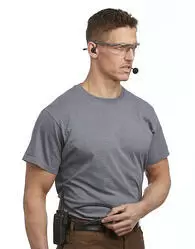
CavCom Phantom™ Lightweight Headsets have proved successful to facilitate that group chat-style communication with 2-way radios and cell phones with many styles of PPE, including PAPRs. As the name implies, the lightweight design doesn’t add to or interfere with hooded PPE. The binaural design supports both ear listening which is optimal.
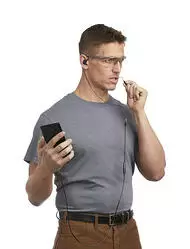
Another option is CavCom CellEarz™. This style offers a corded earset with the familiarity of a standard smartphone-style with the advanced technology to enhance clarity, the ability to listen, speak and be heard in high-noise environments like a chaotic emergency room.
The CavCom Talk Through Your Ears® technology system is also very favorable for two-way radios; the system works with any style two-way radio and any respirator. The earpiece microphone transmits voice from inside the ear canal for clear communication in high noise.
Necessity Driving Innovation
At CavCom, we're starting to see our products used in different ways. For instance, some of the products we never thought would even be possible with a half-face respirator, we're finding that it's actually a possible and effective application. In my opinion, cell phone communication alone — before this distancing and reinforced reliance on technology started — enabling smarter, more intuitive group communication is something that I imagine we’ll start seeing more and more of.
From our point of view, we’re working closely with our customers on the medical and emergency front lines asking the right questions and exploring options when probed for different solutions as variables change. Our goal no matter what happens in the balance of 2020 is to continue to support every effort to enhance communication and protect hearing at every cost. That won’t change.
As a world, we’re unsure of what the future holds in terms of second waves (or more) of COVID-19 ramifications as communities employ reopening plans. What we can likely anticipate is a different response strategy to the shortage of PPE. A heightened priority for safety and communication across every industry. And, a renewed sense of urgency and appreciation for the health and wellness of the population. As a company, we already relate to all of it and look ahead to serving and protecting our country.
| Categories: | Communication in Noise, Respiratory Protection Programs |

